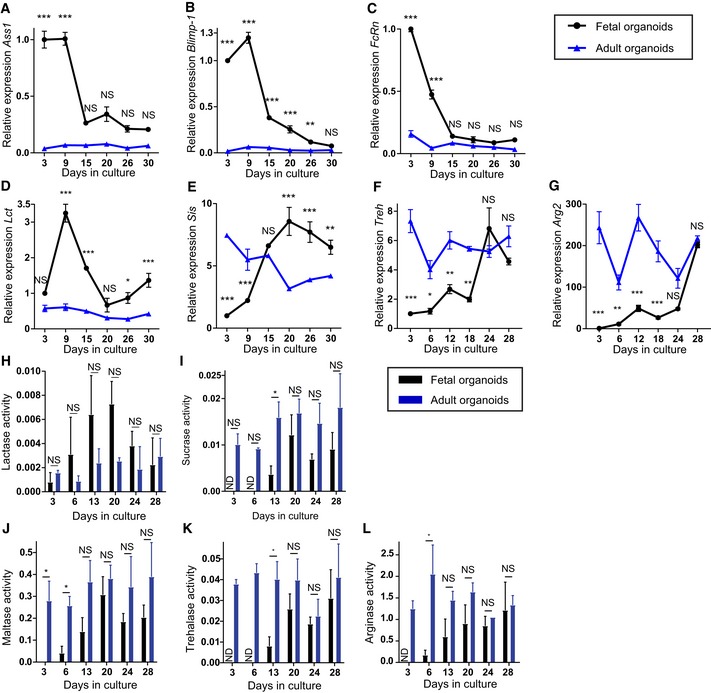Relative expression detected by real‐time qPCR in fetal organoids (black circles) and adult organoids (blue triangles). Neonatal markers (A)
Ass1, (B)
Blimp‐1, (C)
FcRn, and (D)
Lct in fetal organoids cultured for 1 month compared to levels adult organoids. Mature markers (E)
Sis, (F)
Treh, and (G)
Arg2 increase in fetal organoids to adult levels (
n = 3 individual wells from single organoid culture (see
Materials and Methods); experiment was repeated in four independent organoid cultures with similar results).

